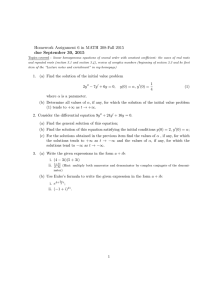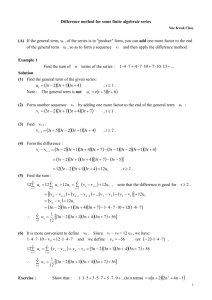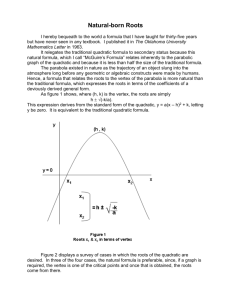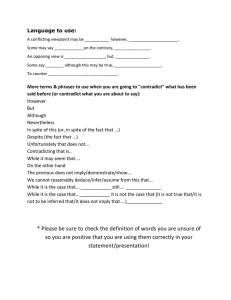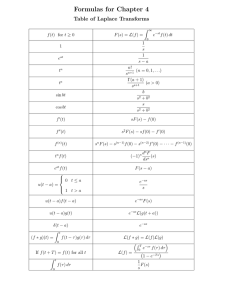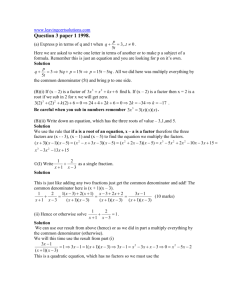A mistake in finding minimum value in quadratic function
advertisement
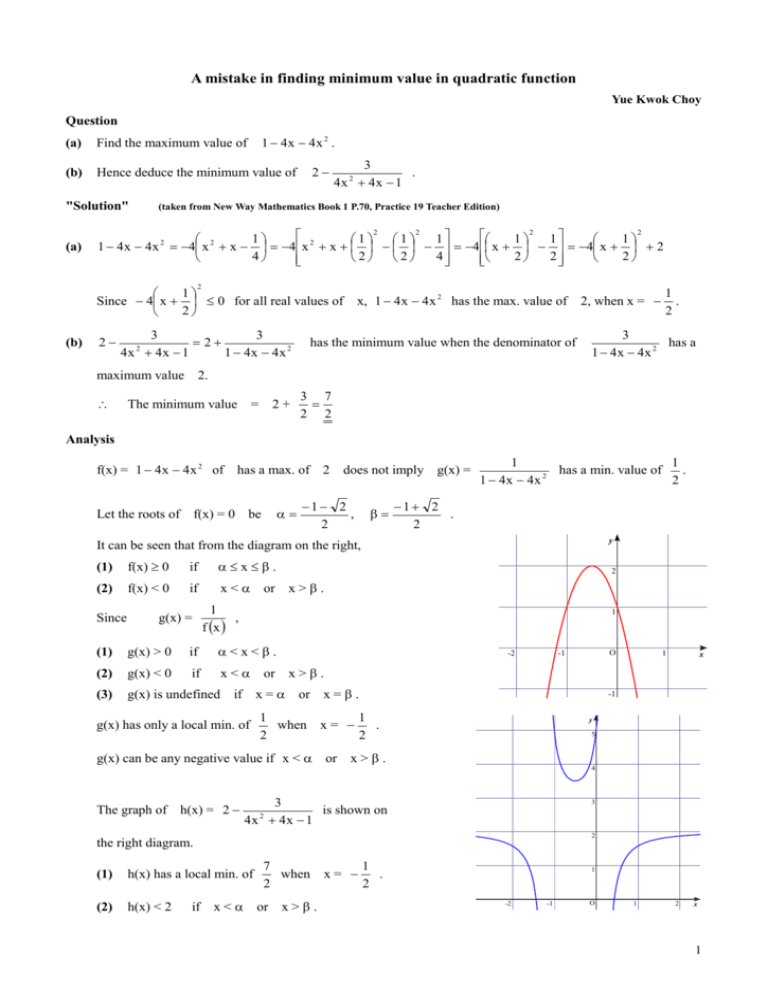
A mistake in finding minimum value in quadratic function Yue Kwok Choy Question 1 − 4x − 4x 2 . (a) Find the maximum value of (b) Hence deduce the minimum value of "Solution" (a) 2− 3 . 4x + 4x − 1 2 (taken from New Way Mathematics Book 1 P.70, Practice 19 Teacher Edition) 2 2 2 2 2 1 1 1 1 1 2 1 1 1 − 4 x − 4x = −4 x + x − = −4 x + x + − − = −4 x + − = −4 x + + 2 4 4 2 2 2 2 2 2 2 1 Since − 4 x + ≤ 0 for all real values of 2 (b) 2− 3 3 = 2+ 4x + 4x − 1 1 − 4x − 4 x 2 2 x, 1 − 4 x − 4 x 2 has the max. value of 2, when x = − has the minimum value when the denominator of 1 . 2 3 has a 1 − 4 x − 4x 2 maximum value 2. ∴ The minimum value = 2+ 3 7 = 2 2 Analysis f(x) = 1 − 4 x − 4 x 2 of has a max. of 2 does not imply g(x) = α= Let the roots of f(x) = 0 be −1− 2 , 2 β= 1 1 has a min. value of . 2 1 − 4x − 4x 2 −1+ 2 . 2 y It can be seen that from the diagram on the right, (1) f(x) ≥ 0 if α≤x≤β. (2) f(x) < 0 if x < α or x > β . Since g(x) = 2 1 , f (x ) 1 (1) g(x) > 0 if α<x<β. (2) g(x) < 0 if x < α or x > β . (3) g(x) is undefined if x = α or x = β . g(x) has only a local min. of -2 O -1 1 x -1 1 1 when x = − . 2 2 y 5 g(x) can be any negative value if x < α or x > β . 4 The graph of h(x) = 2 − 3 is shown on 4x + 4x − 1 3 2 2 the right diagram. (1) h(x) has a local min. of (2) h(x) < 2 7 when 2 if x < α or x > β . x= − 1 . 2 1 -2 -1 O 1 2 x 1

